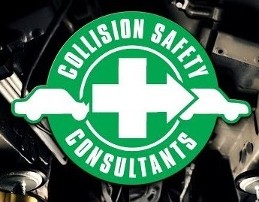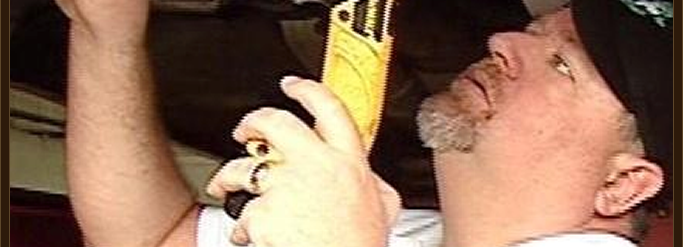This information listed below hopefully, will help you understand diminished value better.
Remember we are always here to help you and answer any questions that you may have.
Inherent Diminished Value:
The automatic loss in the vehicle market value from an accident and repair. It is based on public awareness that even if a vehicle is repaired to the best of human ability, it will still exhibit remaining deficiencies and inconsistencies from the pre-loss condition of the vehicle.
These deficiencies include, but are not limited to:
- Weaker structural components that appear cosmetically sound
- Impossible to duplicate factory seams, sealers, and finishes
- Telltale signs of repair, such as paint missing off the heads of bolts
- The unavailability of some factory decals, and markings
- Undiscovered Kinetic damage throughout the vehicle
- The increased likelihood of a mechanical failure
- The effect that the repair will have on the future deployment of the SRS systems
- The impossibility of duplicating immersion rust-proofing techniques, etc.
Repair Related Diminished Value:
This loss is based on remaining flaws and defects caused by improper repairs for which the shop had been asked, and paid, to complete. Poor repairs would cause the vehicle to be valued less than a properly repaired vehicle.
A few examples of repair related flaws and defects are as follows:
- Poor structural, and cosmetic welds
- Frame repair listed on the insurance estimate, but not completed properly
- Inferior repairs on straightened panels
- Miss-matched color paint after "blending" had been paid
- Sanding scratches on moldings, glass, and trim
Keep in mind that even if there is "Repair Related Diminished value", the insurer is still the only one contractually obligated to restore the vehicle to its pre-loss condition relevant to function, appearance, safety, and value, thus any "Repair Related" diminished value would still be the insurer's responsibility. This area of coverage may fall under the "comprehensive", or "Under Insured" sections of the insurance policy. If the insurer feels that they have sustained losses due to poor repairs, they have the duty to pay the remaining damages (perhaps under the comprehensive section of the policy), and the right to subrogate those losses directly against the at fault shop.
By following these correct and legal steps, the insurance industry would be sending a clear message to repairers that poor quality repairs and fraud are unacceptable.
Insurance Related Diminished Value:
- This loss is based on remaining flaws, defects, and damage, which the insurer had neglected to address. When an insurer negotiates the settlement of an automobile damage claim, they will typically provide an estimate of repairs, which outlines all specific procedures, parts, and materials that they are willing to pay to the claimant or insured. This itemized listing of insurer authorized repairs will be generated by one of the following entities:
- An "in-house" appraiser, who is hired as a full time employee of the insurer, then trained to assess collision damage in accordance with policy provisions.
- An "independent" appraiser who is hired as a subcontractor to assess the damage on behalf of the insurer, who also follows insurer guidelines.
- An employee of a "Direct Repair" body shop, who agrees to prepare the assessments using the guidelines established by the insurer in exchange for consumer referrals from the insurer.
- In some cases, the insurer will offer to pay based on the lowest of three estimates. This will cause the level of compensation to be based upon the estimator with the least experience, inspecting the vehicle for the shortest time, using the poorest repair techniques, and potentially overlooking the most damage.
Under each of the above scenarios, the insurer is bound by law to the assessment and actions of the party the insurer hired to represent themselves. When the appraiser for the insurer (a, b, or c) prepares a damage assessments, or (d) where the insurer relies upon a third party, which overlooks, fails to specify, or refuses to address all repair procedures, parts, and materials required to restore the vehicle to its pre-loss condition, the insurer becomes responsible for "Insurance Related Diminished Value". Since the insurer (and consumer) relies upon the skill and expertise of the insurer's hired appraiser, it would be incumbent upon the insurer to select competent and skilled persons as appraisers so that by complete repair to pre-loss function, appearance, safety, and value, the insurer would have met their contractual obligations. Any failure to authorize all required procedures, parts, and materials to restore a vehicle to its pre-loss condition must be caused by one of the following:
- Inexperience, lack of training, or incompetence on the part of the insurer's selected appraiser.
- Company guidelines set to discourage or prohibit the authorization and payment of all required procedures, parts, and materials.
- Fraud on the part of the insurer by willful and intentional underpayment of all required procedures, parts and materials.
When there is remaining flaws, defects, or damage on the vehicle, and repair procedures were not specifically listed on the itemized insurance authorized repairs, the result would be "Insurance Related Diminished Value". Additionally, when the insurer specifies imitation parts, which are NOT EQUAL TO, OR BETTER THAN the Original Equipment Manufacturer parts, the insurer would also be responsible for the Diminished Value caused by the inferior parts they specified.
Adapted from material from WCCSC resources
We are independent unbiased vehicle damage appraisers & inspectors specializing in the areas of vehicle diminished value, total loss vehicle assessments and pre-purchase & post collision repair inspections.


